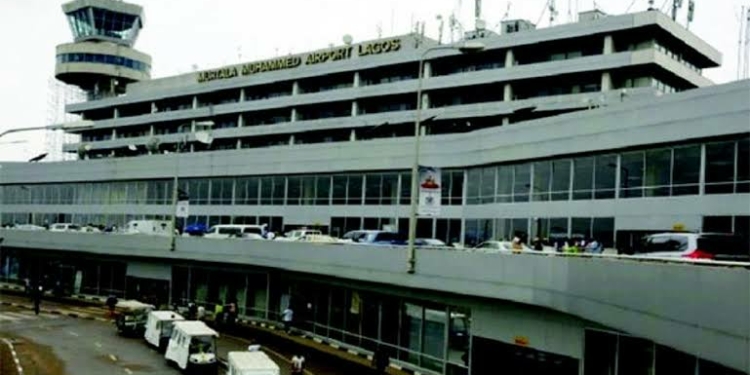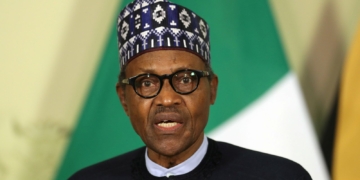Nigeria Airports Authority has recorded a three-year deficit of N44.39 billion, representing losses incurred in 17 airports nationwide, with this development, states governments and regional groups are now mounting pressure on Federal Government and aviation agencies to reopen airports nationwide
It was revealed that, except for the trio of Murtala Muhammed International Airport (MMIA), Lagos, Nnamdi Azikiwe International Airport (NAIA), Abuja, and Port Harcourt International Airport (PHIA), Omagwa, Rivers State, no other had sufficient revenue to cover operation costs between 2017 and 2019.
The current lull in global economic activities, occasioned by COVID-19 pandemic, has worsened the situation. The lean times resulted in low air traffic and revenue. It has also placed an extra financial burden on the struggling Federal Airports Authority of Nigeria (FAAN).
Cumulatively, Worried by the cost amid the present economic crunch, aviation stakeholders have urged the government not to yield to “political pressure”, but to speed up its airport concession plan despite opposition by aviation workers’ unions.
Following three months of COVID-19-induced lockdown of the airspace, the Federal Government’s Task Force on COVID-19 had begun staggered re-opening of local airports, starting with Lagos and Abuja terminals on July 18.
More airports have subsequently opened. They are Victor Attah International Airport, Uyo; the Mallam Aminu Kano International Airport, Kano; Port Harcourt International Airport (PHIA); Margaret Ekpo Airport, Calabar; Yola Airport, Adamawa; Sam Mbakwe International Cargo Airport, Owerri, and Maiduguri Airport, Maiduguri.
Officials confirmed, at the weekend, that more facilities are itching to open. Sources at the Ministry of Aviation said complaints were fast becoming “sentimental and political in nature”.
“Every state government wants their closest airport to resume commercial flights, not minding the level of compliance with the new safety regulations or passenger traffic nationwide.
“Obviously, it is not because there is money to be made from such operations. They can see neighbouring states open and don’t see the reason why they should wait. It is just a distraction but we are taking our time to follow protocols,” a senior official said.
Minister of Aviation, Hadi Sirika, earlier hinted on the development, as he said he would not yield to political pressure.
Sirika said: “Unfortunately, we are living in a country where everything is polarised and trivialised. I remember receiving lots of questions regarding why we did not open, at least, one airport in each geo-political zone, amid pressure to open Owerri.
“We did open Owerri because we believed Owerri was good to go. If Owerri was not ready, we would not open it. Now, we are also receiving pressure from Sokoto. If we find out that we cannot open it, for one reason or the other, we will not open it.”
He explained that airports were opened based on their compliance with the COVID-19 safety protocol. Kaduna and Yola, the minister said, were given a second inspection to ensure everything was set.”
The International Air Transport Association (IATA) lately stated that for an airport to be viable and self-sustaining, it must have, at least, five million passengers a year. Today, only Lagos and Abuja airports could boast of at least five million passengers in a year.
FAAN manages a total of 20 Federal Government-owned airports, with 12,000 workforces, a monthly wage bill of N4 billion and year-in-year balance deficit.
A factsheet of revenue and expenditure of FAAN headquarters in 2017-2019 showed that the body generated a total of N16.09b in three years, and collected N15.02b. It, however, spent a total of N59.41b, leaving a deficit of N44.39b in three years.
According to sources, the deficit was not unconnected with efforts to keep the low-income airports running. Indeed, a closer look at the revenue earnings of some of the airports showed poor viability across the board.
For instance, Kastina Airport in three years generated a total of N250.8m, out of which the only N42.1m was collected. Its cost of operations was put at N1.58b, leaving a deficit balance of N1.54b.
Sokoto Airport had a total of N725.7m revenue, out of which N400.1m was collected. The cost of operation was in excess of N2.71b, which gave a shortage of N2.31b.
In the South, Ibadan Airport, in three years, made a total of N349.2m in generated revenue and collected N244.9m. The expenditure amounted to N1.39b with a deficit of N1.14b.
Ilorin International Airport generated a total of N437.1m revenue in three years and collected N264.2m. The expenditure was in excess of N2.453b, giving a shortfall of N2.19b.
The Benin Airport in Edo State also ran at a loss. The airport generated a total of N993.2m in three years and collected N930.1m. The total cost of operations was put at N2.02b, leaving a shortfall of N1.09b.
The Margaret Ekpo International Airport, Calabar, had a total of N540.8m generated revenue, though collected more, put at N559.6m, the expenditure was as much at N2.50b, giving a deficit of N1.94b.
Similarly, Sam Mbakwe International Cargo Airport, Owerri, amassed a total of N1.25b in generated revenue and collected N1.08b. Expenditure was, however, N2.50b, with a shortage of N1.42b.
Secretary-General of the Aviation of Safety Round Table Initiative (ASRTI), Group Capt. John Ojikutu (rtd), said for as long as there were political motives rather than economic, safety and security motives behind the development of airports, “we can never get strategic policies of our development right.”
Ojikutu recalled that when the traffic was up, not many of these airports were operating optimally including those that opened to restart operations in the COVID-19 era.
“How much earnings were we making when the flights and passenger traffic were up? Why is it that we are not learning from those of the developed countries in aviation technology and commercial aviation that have reduced their fleet, staff and spread of operations drastically to a level of the start of aviation many years ago?
“Do we really know the worth of our airports or the actual contribution of Nigeria commercial aviation to the GDP? What are the total annual earnings of the domestic airlines and the regulatory agencies? The National Assembly that yearly appropriate funds to the sector without serious oversight on the cost of operations and the appropriations is a delinquent accomplice,” he said.
To save cost, Ojikutu advised the government to concession the non-aeronautical facilities at all the airports, and not just the big four, to run efficiently and profitably. He said Lagos and Abuja airports should be concessioned in blocs with four or six other unviable airports.
Aviation workers’ unions have, however, reiterated their stance to resist airport concession plan, saying the facilities were better off under government’s care than in private hands.
The workers, under the coalition of the National Union of Air Transport Employees (NUATE), Air Transport Services Senior Staff Association of Nigeria (ATSSSAN) and Association of Nigerians Aviation Professionals (ANAP), vowed not to cooperate with the concession programme, describing the process as faulty and lacking transparency.
Chairman and Founder of Finchglow Group, Bankole Bernard, said the concession was most imperative to save unavailable funds, adding that its naysayers were either “ill-informed or self-centred”.




Discussion about this post